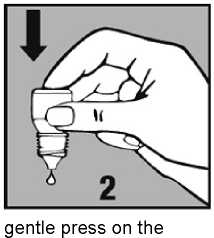Ciloxan 0.3% Eye Drops
1. What Ciloxan is and what it is used for
2. Before you use Ciloxan
3. How to use Ciloxan


PACKAGE LEAFLET: INFORMATION FOR THE USER CILOXAN® 0.3% EYE DROPS
(ciprofloxacin hydrochloride)
The name of your medicine is Ciloxan® 0.3% Eye Drops, but will be referred to as Ciloxan throughout the remainder of this leaflet.
Read all of this leaflet carefully before you start using this medicine.
• Keep this leaflet. You may need to read it again.
• If you have any further questions, ask your doctor or pharmacist.
• This medicine has been prescribed for you. Do not pass it on to others. It may harm them, even if their symptoms are the same as yours.
• If any of the side effects get serious, or if you notice any side effects not listed in the leaflet, please tell your doctor or pharmacist.
In this leaflet:
1. What Ciloxan is and what it is used for
2. Before you use Ciloxan
3. How to use Ciloxan
4. Possible side effects
5. How to store Ciloxan
6. Further information
Ciloxan belongs to a group of medicines known as quinolone antibiotics.
It is used for the treatment of corneal ulcers and some other bacterial infections of the eye(s).
Do not use Ciloxan...
• If you are allergic (hypersensitive) to ciprofloxacin or any other quinolone antibiotic or to any of the other ingredients listed in section 6.
Ask your doctor for advice.
Take special care...
• Only use Ciloxan in your eyes.
• Only use Ciloxan in children younger than 1 year if prescribed by your doctor.
• As with any antibiotic, use of Ciloxan for a long time may
lead to other infections. If your symptoms get worse or suddenly return tell your doctor. You may become more susceptible to other infections with the use of this medicine, especially after prolonged use.
• If you notice the first signs of a skin rash or any other allergic reaction, including hives, itching, breathing problems stop treatment and immediately contact your doctor. If you have a serious allergic reaction then you may need emergency treatment.
• If you feel pain, swelling or inflammation while or shortly after taking this medicine, stop treatment and contact your doctor.
• If you are elderly or if you are taking medicines called 'corticosteroids' used to treat conditions such as pain and inflammation, asthma or skin problems then you have a higher risk of getting tendon problems during treatment with Ciloxan. If you experience any inflammation or inflammatory condition, stop treatment and immediately consult your doctor.
Pregnancy and breast-feeding
If you are pregnant or might get pregnant, or if you are breastfeeding a baby, talk to your doctor before you use Ciloxan.
Driving and using machines
If your sight is temporarily blurred or affected in any way
following use of Ciloxan you should not drive or operate
machinery until your vision is clear again.
Using other medicines
Tell your doctor or pharmacist if you are taking or have recently taken any other medicines, including medicines obtained without a prescription.
If you are using more than one type of eye medicine, the medicines must be used at least 5 minutes apart. Eye ointments should be used last.
Important information if you wear Contact Lenses
There is a preservative in Ciloxan (benzalkonium chloride) that may cause eye irritation and can discolour soft contact lenses.
Do not wear contact lenses (hard or soft) during treatment with Ciloxan.
The usual dose
This will depend on whether you are being treated for corneal ulcers or for some other bacterial infection in your eye.
Corneal Ulcers
Dosing is continued during the night time.
Day 1 - 2 drops every 15 minutes for the first 6 hours and then 2 drops every 30 minutes.
Day 2 - 2 drops every hour.
Day 3 to Day 14 - 2 drops every 4 hours.
Your doctor will tell you if treatment needs to be continued for longer than 14 days.
Other bacterial infections
1 or 2 drops 4 times a day. For severe infections the dose for the first 2 days may be increased to 1 or 2 drops every 2 hours, while you are awake.
It is important that you continue to use Ciloxan for the full treatment period as advised by your doctor even if your symptoms improve. If you stop using this medicine too early, your symptoms may re-occur.
You should not use Ciloxan for more than 21 days, unless your doctor says otherwise.
Remove the loose collar from the cap when the bottle is first
opened.
Always use Ciloxan exactly as your doctor has told you. You
should check with your doctor or pharmacist if you are not sure.
How to use
• Wash your hands before you start.
• Twist off the bottle cap.
• Hold the bottle pointing down, between your thumb and fingers.
• Tilt your head back.
• Pull down your lower eyelid with a finger, until there is a 'pocket' between the eyelid and your eye. The drop will go in here (picture 1).
• Bring the bottle tip close to the eye. Do this in front of a mirror if it helps.
• Do not touch your eye or eyelid, surrounding areas or other surfaces with the dropper.
It could infect the drops.
• Gently press on the base of the bottle to release one drop at a time (picture 2).
• Do not squeeze the bottle, only a bottom is needed.
• If you use drops in both eyes, repeat the steps for your other eye. Put the bottle cap firmly back on immediately after use.